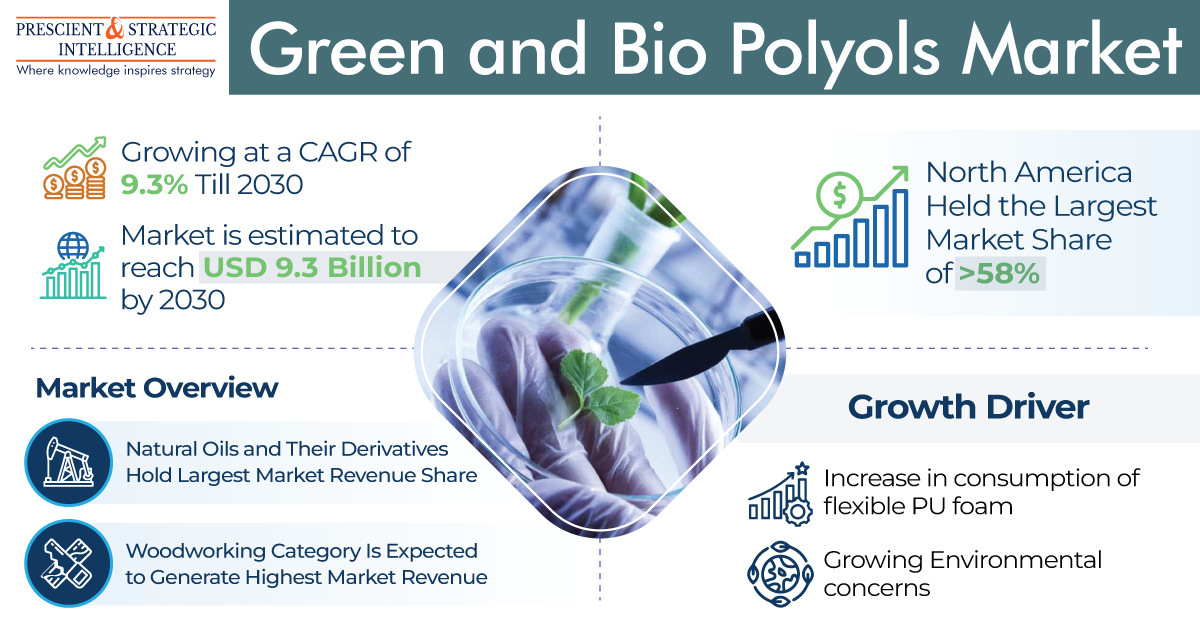As per a statement by a market research institution, P&S Intelligence, the green and bio polyols market generated a value of USD 4.6 billion in 2022, and it will advance at a 9.3% compound annual growth rate, to touch USD 9.3 billion, by 2030.
The growth in the green and bio polyols industry is mainly attributed to the increasing environmental consciousness and severe government rules that are intended at decreasing the consumption of polyols created from petroleum.
Moreover, the increasing requirement for rigid foams or flexible PU in the construction industry, along with the woodworking industry, will also boost the requirement for these chemicals globally.
The growing concerns regarding the unsustainability and shortage of non-renewable resources and environmental degradation due to their usage have resulted in several initiatives to produce bio-based polyols and PUs.
Based on raw material, in 2022, the natural oils and their derivatives category accounted for the largest revenue in the industry of green and bio polyols, at USD 1,378 million, and it will remain the largest in the years to come. This is attributed to the fact that polyols are extensively prepared from palm oil, rapeseed oil, soybean oil, castor oil, and sunflower oil.
Based on type, in 2022, the polyether polyols category accounted for the largest green and bio polyols market revenue share, at over 62%, and it will remain the largest throughout this decade. This is credited to the fact that these chemicals are widely implemented in the production of flexible PU foam, soft foam, molding foam, and rigid foam products due to their good structural integrity and easy accessibility.
In 2022, the woodworking category generated the highest revenue in the industry of green and bio polyols, of USD 1,470 million, and it will remain highest throughout this decade. This is attributed to the fact that wooden items are utilized in every household, and also for packaging and also in cars.
In the recent past, North America generated the highest revenue in the industry, USD 2,664 million, and it will remain like this throughout this decade. The region is a vast industry for polyols because of the rapidly increasing requirement for them and their enhancing performance and quality.
The utilization of these products is increasing because of the increasing construction expenses in the U.S., with several residential buildings, corporate offices, resorts & hotels, retail spaces, and outdoor recreation arenas under development.


